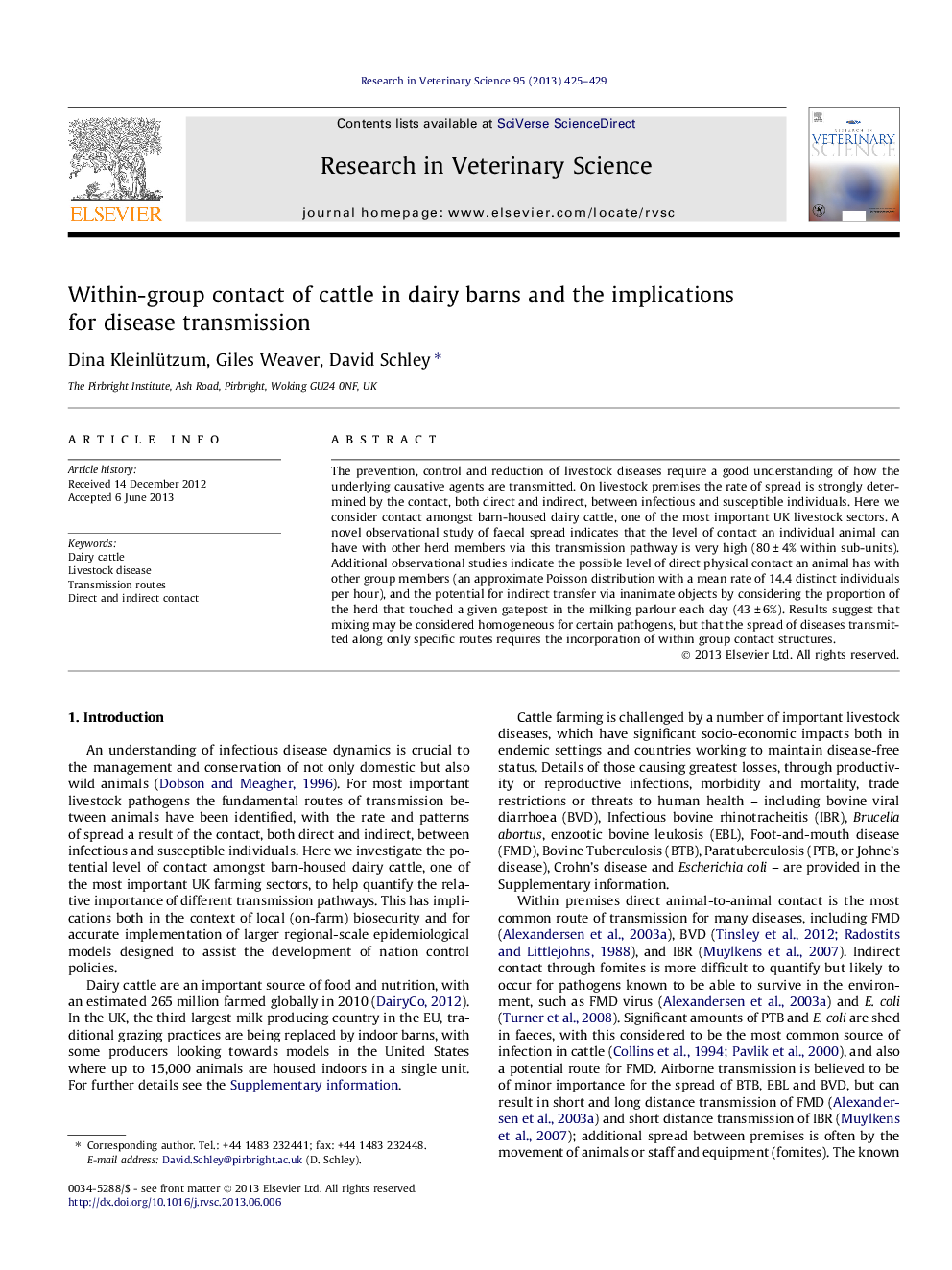| Article ID | Journal | Published Year | Pages | File Type |
|---|---|---|---|---|
| 2455090 | Research in Veterinary Science | 2013 | 5 Pages |
The prevention, control and reduction of livestock diseases require a good understanding of how the underlying causative agents are transmitted. On livestock premises the rate of spread is strongly determined by the contact, both direct and indirect, between infectious and susceptible individuals. Here we consider contact amongst barn-housed dairy cattle, one of the most important UK livestock sectors. A novel observational study of faecal spread indicates that the level of contact an individual animal can have with other herd members via this transmission pathway is very high (80 ± 4% within sub-units). Additional observational studies indicate the possible level of direct physical contact an animal has with other group members (an approximate Poisson distribution with a mean rate of 14.4 distinct individuals per hour), and the potential for indirect transfer via inanimate objects by considering the proportion of the herd that touched a given gatepost in the milking parlour each day (43 ± 6%). Results suggest that mixing may be considered homogeneous for certain pathogens, but that the spread of diseases transmitted along only specific routes requires the incorporation of within group contact structures.
